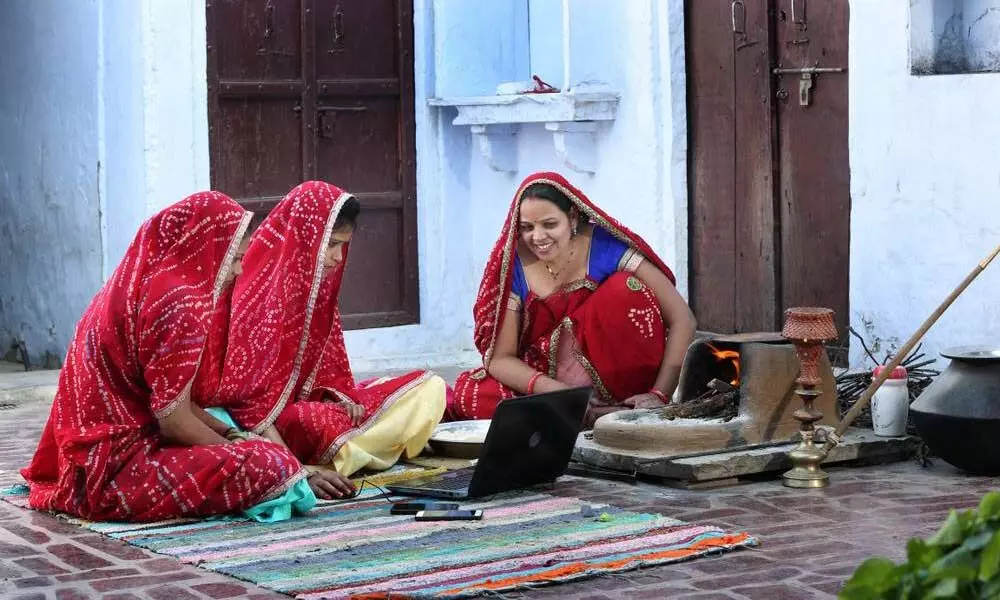Despite Covid impact, SHGs' NPA component dips
Q3 has been a good quarter with better collection efficiency and also disbursement. I am sure Q4 will build on the momentum to normalcy, said Manoj Kumar Nambiar, MD, Arohan Financial Services
image for illustrative purpose

Staying Afloat
- SHGs with saving linkage are now 112 lakh from 100 lakhs in FY19
- Several MFIs offering fintech solutions
- Tech-based services smoothen process of credit
- West Bengal, TN & Bihar top States in portfolio outstanding (`34,587 cr)
Mumbai: The all-India non-performing asset (NPA) as percentage to loan outstanding under SHG-BLP declined to 4.73 per cent in 2020-21 from 5.19 per cent in 2018-19. However, the number of self-help groups (SHGs) with saving linkage increased from about 100 lakhs to about 112 lakhs during the period under review, says a report by Infomerics.
Microfinance industry (MFI) is one of the most important paradigms of the Indian financial sector due to its grass-root coverage and its overarching vision of providing credit to the relatively unbanked sections of the society, but by no means un-bankable, thereby creating meaning and value in the lives of the people. This transformative effort constitutes an integral part of the mainframe economics and the well-being of the overall society.
The people in the industry are quite optimistic about the good performance of the industry in the fourth quarter of the current financial year.
Talking to Bizz Buzz, Manoj Kumar Nambiar, MD, Arohan Financial Services, said: "Q3 has been a good quarter with better collection efficiency and also disbursement. I am sure Q4 will build on the momentum to normalcy."
The amount of loan disbursed, dipped in the wake of the devastating Covid pandemic. However, the number of SHGs with saving linkage increased from about 100 lakhs to about 112 lakh during the period under review. The all-India NPA as percentage to loan outstanding under SHG-BLP declined to 4.73 per cent in 2020-21 from 5.19 per cent in 2018-19.
West Bengal retained its spot as the largest State in terms of portfolio outstanding (Rs 34,587 crore) followed by Tamil Nadu and Bihar (Rs 35,312 crore and Rs 26,997 crore respectively). Among top 10 states, West Bengal had the highest average loan outstanding per unique borrower of Rs 54,159 followed by Assam at Rs 48,697.
The report thereby also mentions about the several initiatives taken by various institutions like exploring Fintech solutions to ensure customer safety and ease during the Covid pandemic. Many organizations introduced apps and services to smoothen the process of credit. For example, Satin Creditcare Network introduced an app – a one-stop solution for the clients for their post-loan services, Muthoot Microfin introduced 'Mahila Mitra', a customer app where customers can pay instalments, view loan track, apply for new loans, refer leads and lodge a complaint, SaGgraha Management Services adopted a Collection Management Application which could capture information of 'Promise to Pay (PTP)' date provided by customers allowing employees to follow-up with them.
Credit Guarantee Scheme for MFIs (CGSMFI) was initiated to provide guarantee by National Credit Guarantee Trustee Company (NCGTC) to member lending institutions (MLIs) for loans extended by them to NBFC-MFIs and MFIs in the country.
Also, JLG(Joint Liability Group) promotion support initiative by NABARD extends grant support for formation and nurturing of JLGs to banks and other JLG promoting institutions. In 2020-21, a total of 41.27 lakh JLGs were promoted as compared to 41.80 lakh JLGs promoted during 2019-20.
Another notable initiative mentioned is eShakti, a pilot project for digitisation of SHGs that was launched by NABARD in the year 2015 in two districts Ramgarh (Jharkhand) and Dhule (Maharashtra) and later expanded to 100 districts across the country during 2016 and 2017. It
aims at digitisation of data of all SHGs for enhancing the ease of doing business with SHGs. Beginning with 2 lakh SHGs in 2016 project e-Shakti now covers 12.33 lakh SHGs and is being implemented in 281 districts in the country.
Despite the various initiatives taken by institutions, the risk factors for the industry still persists in lieu of microfinance regulation. The recent regulatory framework released by the RBI has
also caused concern. The overall permissible indebtedness limit linked to the repayment capacity of the borrower at a household level has been capped at 50 per cent of the household income. This could reduce the formal credit flow to the borrowers, who may perforce explore informal sources for credit. The industry has sought an additional support of Rs7,500 crore under the CGSMFI since the initial Rs7,500 crore announced in June 2021 has been exhausted.
Further, the delinquency rates of the MFI industry have been rising. The delinquency eased to 2.90 per cent by the end of FY21 but rose to a clearly unsustainable level of 10.52 per cent in the devastating second wave in the '30-59 days past due' category. The delinquency rate also rose in the '60-89 days past due' and '90-179 days past due' category. All this demonstrates that the repaying capacity of the poor class was severely debilitated by the pandemic.
The removal of interest rate cap on microfinance loans also opens abuse as borrowers may be charged disproportionately high interest rates. However, the RBI has cautioned that chasing asset growth and good returns should not pull the lenders and emphasized that lenders are important in harmonising growth and welfare.

